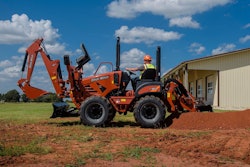

One of the non-language methods to communicate with employees is the usage of body language.
“Make an effort to communicate with an employee, even if you’re separated by language,” he says. “For that individual to understand that you have an interest in them really goes a long way.”
Even simply making eye contact with a non-English speaking employee, patting him/her on the back, shaking his/her hand and including him/her when others are being recognized for a job well done lets your employees know that their contribution is being recognized.
Positively engaging with Spanish-speaking employees and taking the time to notice and ask if something is amiss translates that you care about them. Likewise, constructive criticism should be given in a way that is most likely to be received in a positive way where employees will modify their behavior in response.
Understanding cultural differences
While the differences in languages are obvious, cultural differences in communication can often be neglected or misunderstood.
“Understand that you’re not always going to be perfectly understood,” Egües says. “It’s also important to not misinterpret others’ non-verbal cues.”
Lack of eye contact is an example of a non-verbal cue that can be misunderstood, as non-Hispanics would interpret it as disrespect or disinterest. Yet Egües says with Hispanics, often they have been taught not to make eye contact with authority figures.
“Not getting the eye contact from a Hispanic employee with limited English skills who is not only not fluent (in English) but not really enculturated to the American societal norms could very well be a sign of very high respect, so that’s a challenge,” he says.
Another common issue that can occur when talking to native Spanish speakers is if you ask them a closed question that can be answered with a yes or a no, you will always get the affirmative, according to Egües.
For example, if you ask a non-English speaking employee if they understand and they say yes, it doesn’t necessarily mean that they understood completely what you said and are ready and able to act on it.
“That ‘Sí’ oftentimes means I am not challenging your authority on this point that you raised with me,” Egües says. “That’s a very different response and so using the open questions in communicating is much more effective in getting a response of degree of understanding, degree of engagement, degree of concern.”
Make sure your crew leaders know how to take the lead in opening critical lines of communication. For many foreign-born Hispanics, speaking up about a problem is tantamount to challenging the boss’s authority.
Bridging the language gap
Overcoming the language barrier requires effort on both sides, which is why Egües says it’s good for landscaping companies to facilitate learning opportunities.
Some of the options include bringing a language program in-house or setting up for crews to be able to attend an evening program at a local high school or community college.
“One thing they can do is during the slow months during the winter, if they want, they can send their crews, the English people to learn Spanish and the Spanish people learn basic English,” says Jan Johnsen, co-principal and owner of Johnsen Landscapes & Pools based in Westchester County, New York.
The Plant Concierge is just one of the companies that discovered the value of offering English and Spanish classes to employees. Owner Thomas Fancher opted to hire a language tutor.
“The guys who spoke Spanish were excited to see us using more Spanish, and we were excited to see them using more English,” he told NALP. “They appreciated it so much. Our guys were not only developing within the organization, but they were also experiencing personal development at home.”
Both Egües and Johnsen suggest using Rosetta Stone as a way to learn more Spanish. Johnsen advises using your time wisely and spending travel time listening to Rosetta Stone instead of the radio. There are also a number of language learning apps available as well.
Another often overlooked learning opportunity is simply talking with native Spanish speakers, as repetition and regular use are key to retaining a language.
“It’s an advantage that many in the landscape industry who are not native Spanish speakers have when they have Hispanic employees with very limited English skills,” Egües says. “They have an opportunity, really every day, to use something, to use a term, to use a phrase and to communicate interest.”
The NHLA always recommends native Spanish speakers learn as much English as they can, starting with industry-related terms. Egües acknowledges that learning another language comes easy for some and is near impossible for others.
“I think that when those efforts are made, that sends a signal to the non-Spanish speakers that, ‘Look, I’m doing my best to reach across,’” Egües says. “You know how hard it is for you to learn another language. It’s no easier for us coming the other way.”
Johnsen says the future is here as the country has a bilingual workforce where Spanish-speakers need to learn English and English-speakers need to learn Spanish. She recommends to her students she teaches at the New York Botanical Gardens they learn Spanish as well as horticulture knowledge.
“This is not an idle recommendation,” Johnsen says. “This is almost a necessity going forward. When you don’t speak each other’s language, there is this invisible barrier. That is hard to break through, unless you try to learn on both sides.”









